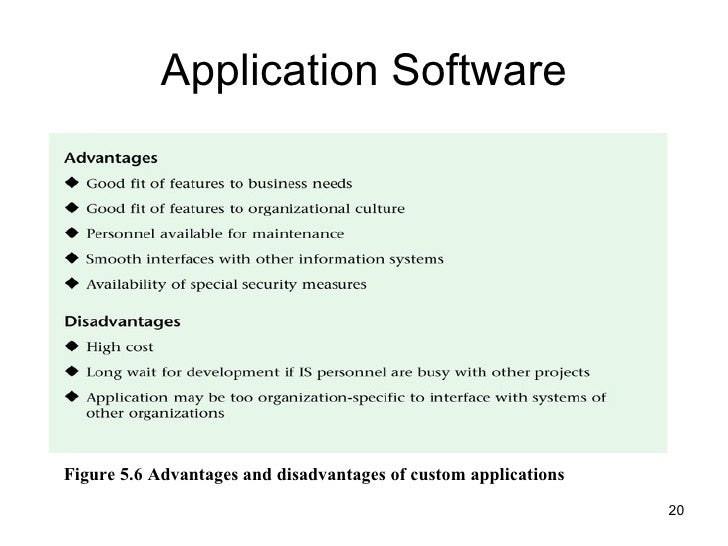Canned Software Advantages And Disadvantages
- Open Source Software Advantages And Disadvantages
- Bespoke Software Advantages And Disadvantages
- Packaged Software Advantages And Disadvantages
Canned software is software that you go to a store and just buy off the shelf, opposite from software that someone would make just for your needs and not the average users. 1 Advantages & Disadvantages of a Proprietary System vs. An Open Platform 2 The Disadvantages of Using Accounting Software 3 Advantages & Disadvantages of Licensing the Rights to the Company's. Advantages of canned solutions: Expenses on solution’s support, updates, and security issues are minimal. Sdac delphi 7 rapidshare downloader. Analyze all the advantages and disadvantages of two software solution types and decide which one you can truly benefit from. If still in doubts, apply to.
Open Source Software Advantages And Disadvantages

Bespoke Software Advantages And Disadvantages

Packaged Software Advantages And Disadvantages
End-user computing is the hands-on development, use, and control of computer-based information systems by users. The suitable applications are: Producing simple reports and answers to one-time queries by accessing the company database. Sensitivity, statistical, or 'what-if' analysis. Using spreadsheets or database software to analyze data. Preparing schedules and lists such as depreciation schedule, accounts receivable aging, and loan amortizations. User computing has seen an explosive growth because: Users realized that computers can be used to meet more and more information needs. Increased access to data created many new uses and needs for information. One prediction is that end-user computing may account for 75% to 95% of all information processed in the near future. Advantages of end-user computing: The user is involved in the creation, control, and implementation of the software; systems tend to meet user needs; programs can be created timely; end-users creating programming can free up IS resources; and programs tend to be versatile and easy to use. Disadvantages of end-user computing: Logic and development errors; inadequately tested applications; inefficient systems; poorly controlled and documented systems; systems incompatibilities; duplication of systems and data; and wasted resources and increased costs.